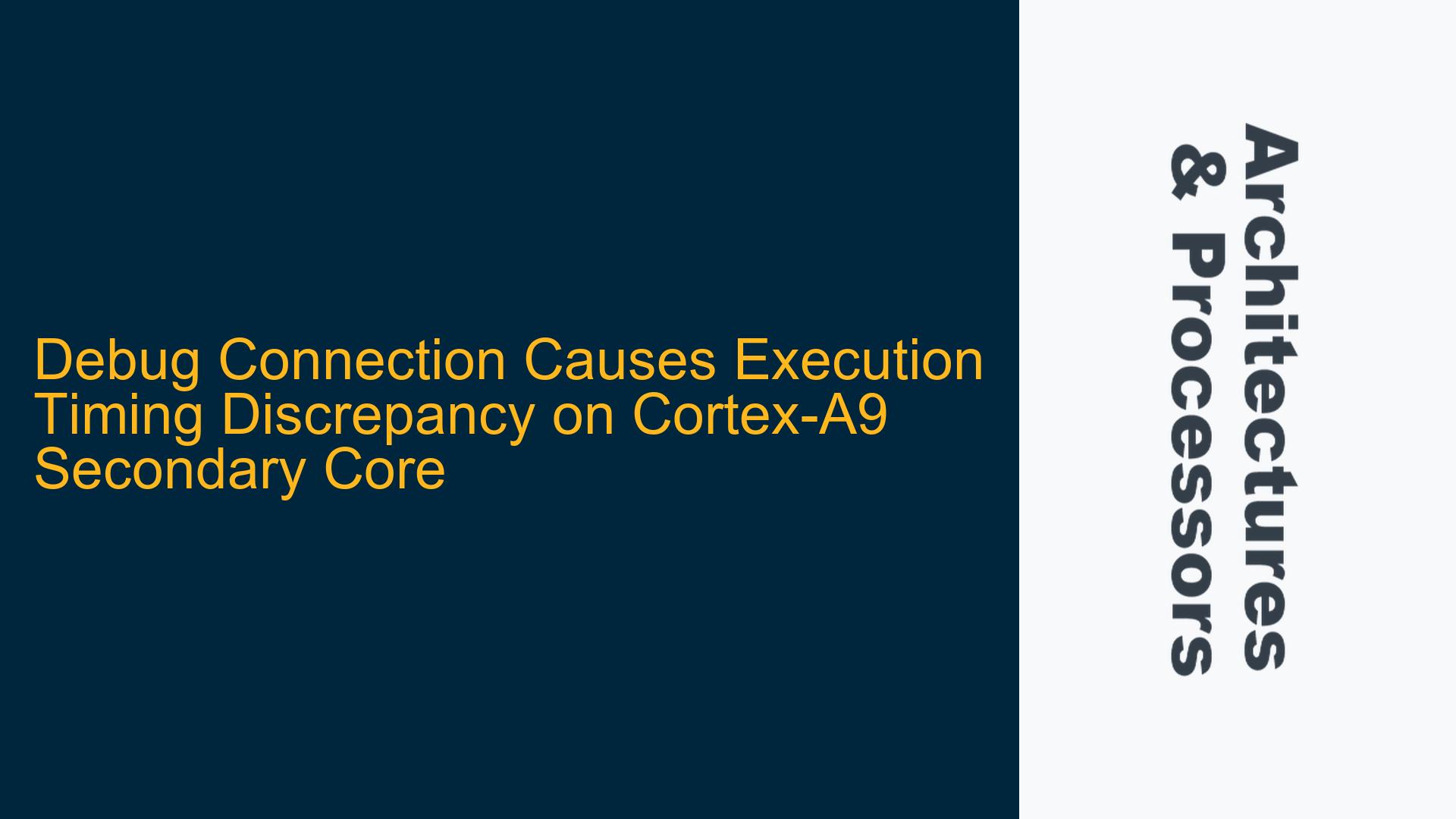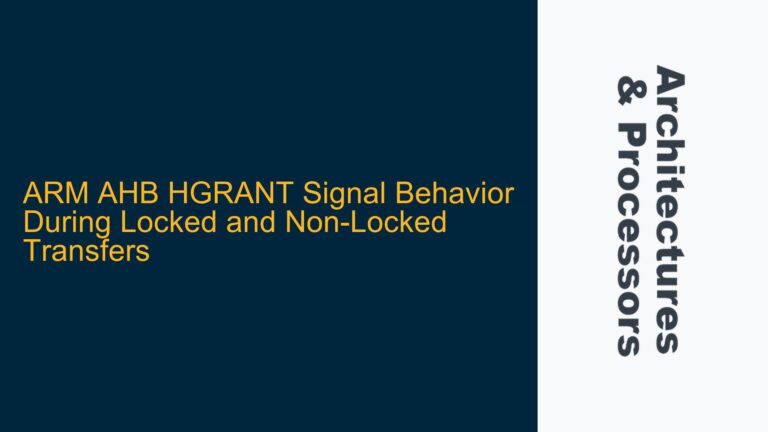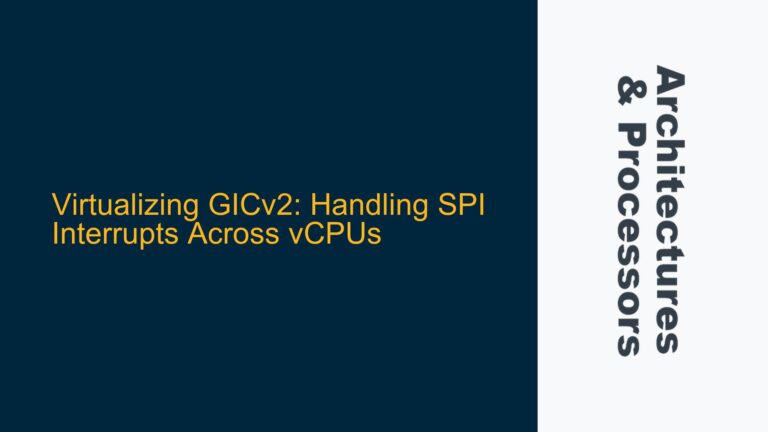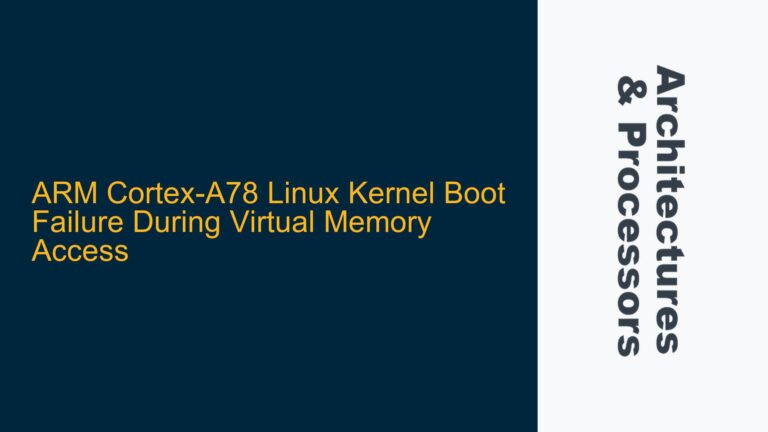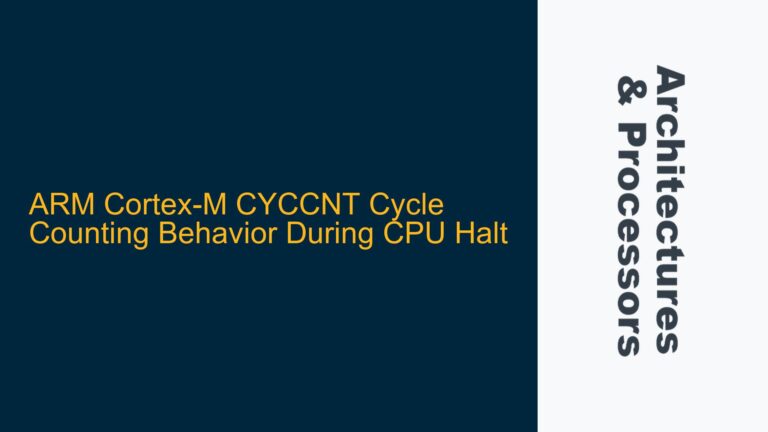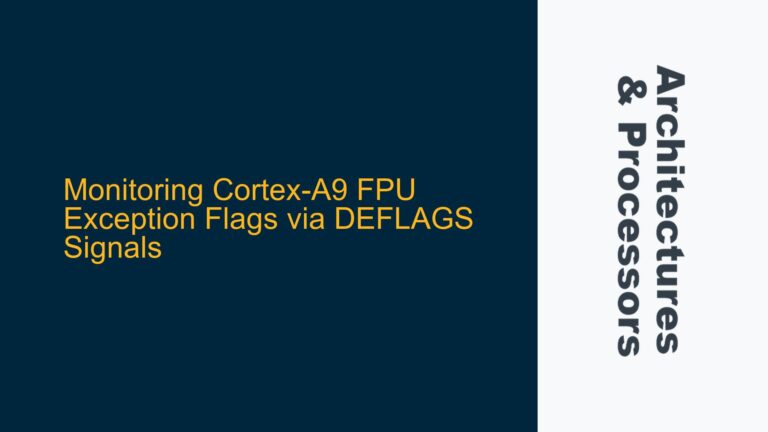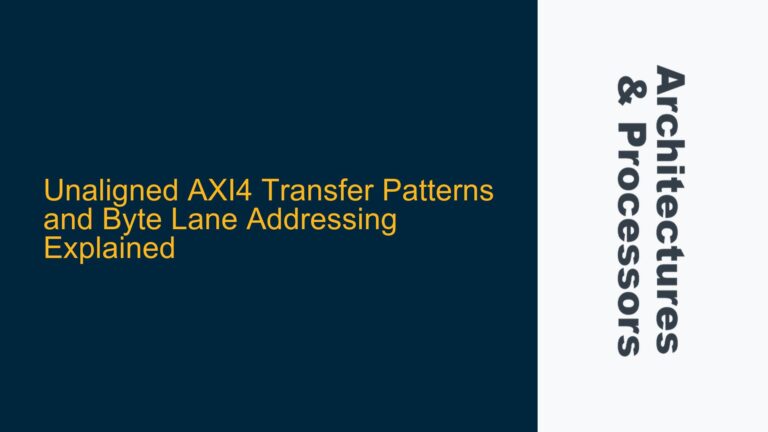ARM Cortex-A9 Secondary Core Execution Timing Discrepancy During Debugging
The issue at hand involves a significant discrepancy in the execution timing of an algorithm running on the secondary core of a Cortex-A9 MPCore processor within a Zynq 702 SoC. Specifically, the algorithm execution time increases from an expected 100 ms to approximately 300 ms when a debug connection is established using DS-5 via DStream. This timing anomaly disappears when the debug connection is disconnected, and the system runs standalone. This behavior suggests that the debug connection is introducing overhead or interference that impacts the secondary core’s performance.
The Cortex-A9 MPCore architecture is designed to support symmetric multiprocessing (SMP) and asymmetric multiprocessing (AMP) configurations. In this case, the system is configured in an AMP setup, where the primary core runs a real-time operating system (uC/OS-III) and the secondary core operates in bare-metal mode, executing algorithms triggered by software-generated interrupts. The timing discrepancy observed during debugging raises questions about the interaction between the debug infrastructure and the secondary core’s execution environment.
The debug infrastructure in ARM processors, including the Cortex-A9, is built around the Debug Access Port (DAP) and the Advanced Peripheral Bus (APB) debug interface. The DAP allows external debug tools like DS-5 to access and control the processor’s internal state, including registers, memory, and performance counters. While the DAP is designed to operate transparently, certain debug activities, such as periodic polling or memory access, can introduce bus contention or interrupt latency, potentially affecting the timing of real-time tasks.
Debugger-Induced Bus Contention and Cache Interference
The primary cause of the execution timing discrepancy lies in the interaction between the debugger and the Cortex-A9’s memory and bus architecture. When the debugger is connected, it periodically polls the target system for state changes and updates memory windows or variable displays. These activities are performed over the DAP and APB debug bus, which shares resources with the system’s main memory and peripheral buses. Even if no memory windows are explicitly open, the debugger may still perform background tasks that access the system’s memory or caches.
The Cortex-A9 features a multi-level cache hierarchy, including L1 instruction and data caches for each core and a shared L2 cache. The debugger’s memory access requests can interfere with the cache coherency mechanisms, causing cache line evictions or invalidations that disrupt the secondary core’s execution flow. Additionally, the debugger’s bus transactions may introduce contention on the AXI interconnect, leading to increased latency for memory accesses performed by the secondary core.
Another potential cause is the impact of debug exceptions and breakpoints. While the user has not explicitly set breakpoints, the debugger may still use hardware breakpoints or watchpoints to monitor specific memory locations or registers. These debug features can trigger exceptions or interrupts that temporarily halt the secondary core’s execution, introducing additional latency. Furthermore, the debugger’s handling of these exceptions may involve context switches or cache flushes that further degrade performance.
The Cortex-A9’s power management features, such as clock gating and dynamic voltage and frequency scaling (DVFS), may also be affected by the debug connection. The debugger may disable certain power-saving mechanisms to ensure consistent debugging behavior, resulting in higher power consumption and altered timing characteristics. This can lead to unexpected changes in the secondary core’s execution speed, especially if the algorithm is sensitive to clock frequency or memory access latency.
Mitigating Debugger-Induced Timing Discrepancies Through Configuration and Optimization
To address the execution timing discrepancy, several troubleshooting steps and optimizations can be implemented. First, it is essential to minimize the debugger’s impact on the system’s memory and bus resources. This can be achieved by configuring the debugger to reduce the frequency of background polling and memory access. In DS-5, this can be done by adjusting the "Refresh Rate" setting for memory windows and variable displays. Additionally, disabling unnecessary debug features, such as hardware breakpoints or watchpoints, can reduce the likelihood of debug exceptions interfering with the secondary core’s execution.
Another approach is to isolate the secondary core’s memory accesses from the debugger’s activities. This can be done by configuring the Cortex-A9’s memory protection unit (MPU) to restrict the debugger’s access to specific memory regions. By limiting the debugger’s access to non-critical memory areas, the secondary core’s algorithm execution can proceed with minimal interference. Additionally, using separate memory banks or cache partitions for the secondary core’s data can help maintain cache coherency and reduce contention.
Optimizing the algorithm’s memory access patterns can also mitigate the impact of debugger-induced bus contention. By aligning data structures to cache line boundaries and minimizing cache line evictions, the secondary core can reduce the frequency of cache misses and improve execution consistency. Techniques such as prefetching and loop unrolling can further enhance the algorithm’s performance and resilience to timing variations.
Finally, it is crucial to validate the system’s timing behavior under different debugger configurations and operating conditions. This can be done by measuring the algorithm’s execution time with and without the debugger connected, using high-resolution timers or performance counters. By comparing these measurements, it is possible to identify the specific debugger activities that contribute to the timing discrepancy and refine the system’s configuration accordingly.
In conclusion, the execution timing discrepancy observed on the Cortex-A9 secondary core during debugging is primarily caused by debugger-induced bus contention and cache interference. By carefully configuring the debugger, isolating memory accesses, and optimizing the algorithm’s execution, it is possible to mitigate these effects and achieve consistent timing behavior. These steps ensure that the system’s real-time performance is maintained, even when debugging tools are connected.
